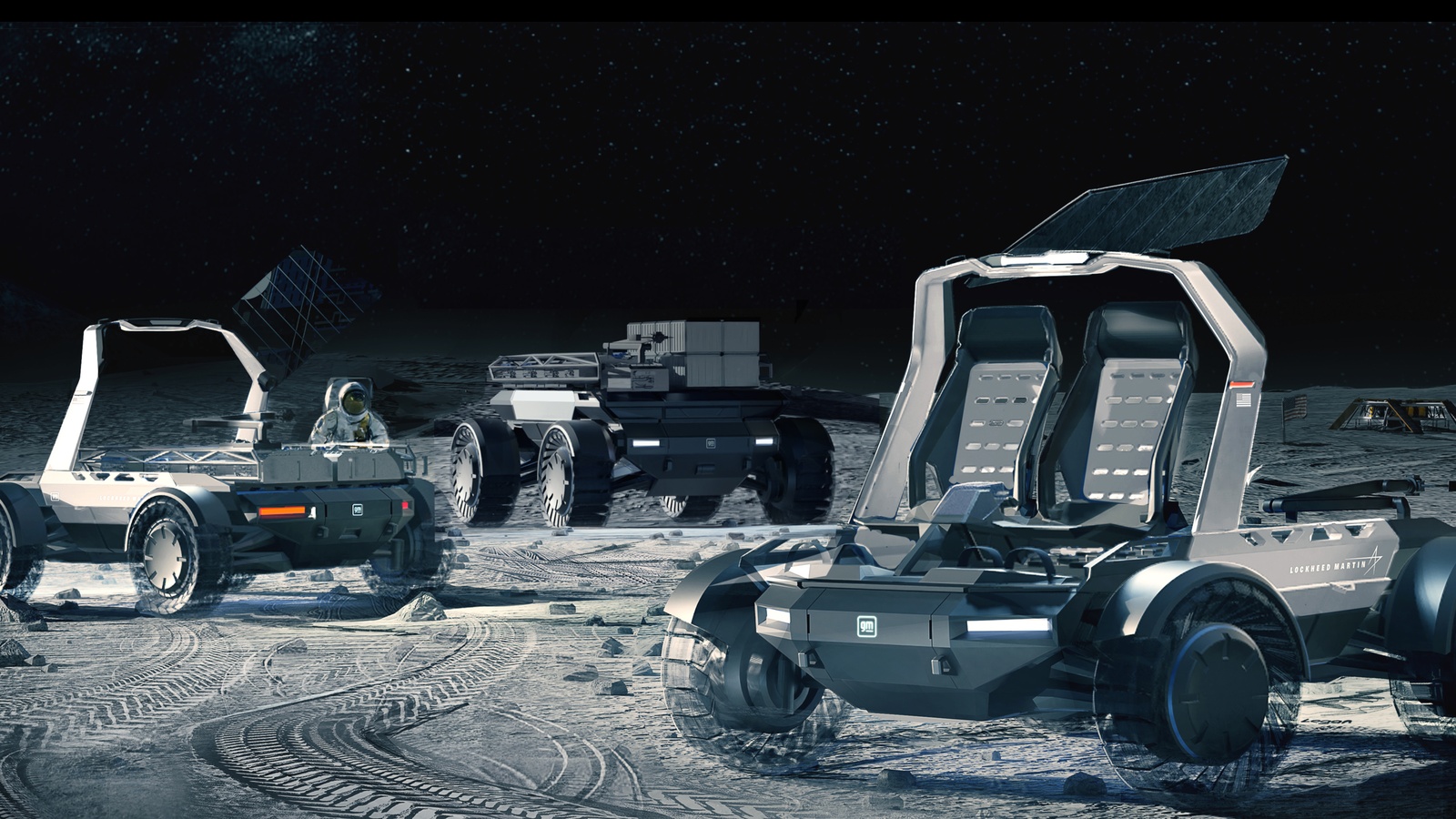“Manufacturing on the Moon”: The Next Lunar Vehicle

When astronauts return to the surface of the moon in 2025, they will find a car waiting to pick them up. The new lunar mobility vehicle, designed and built by Lockheed Martin and GM with tires by Goodyear, will be sent up prior to the humans—but more excitingly, it will stay there long after they leave. In fact, the vehicle will remain on the moon for many years, performing experiments and fulfilling commercial contracts autonomously in between NASA missions.
We were delighted to learn all this and more in a recent interview with Kirk Shireman, Lockheed Martin’s vice president for the Lunar Exploration Campaign, who told us all about the astonishing technology involved. Here’s what we learned about the vehicle, which will be the first on the moon since 1972. Though those rovers were the “finest technology” of their day, as Shireman says, the new lunar vehicle is certainly the finest of ours.
The new design: To withstand the moon’s environment for years on end, the vehicle will require state-of-the-art components and materials. The companies are still in the “materials selection phase,” says Shireman, but he did share several of the broad requirements.
- The vehicle will use the latest in battery technology, allowing it to power down almost completely during the long, frigid lunar night (which, like a lunar day, lasts for 14 Earth days). Temperatures will range from -280 degrees Fahrenheit at night to 260 degrees Fahrenheit during the day.
- Not only must the materials hold up under the temperature shifts, which occur very rapidly, they must also withstand the sharp, abrasive electrostatic dust that “clings to everything,” says Shireman.
- In addition, the vehicle must be light—it’s tough to transport things to the lunar surface, and every ounce counts.
- And last, safety is of course paramount; the vehicle must be easy to enter and exit for the astronauts. The vehicle’s speed will top out at about 12 mph, also for safety reasons.
Testing: The moon has only one-sixth of the Earth’s gravity, and it’s pretty much impossible to simulate driving in such conditions while here on Earth. The engineers must rely on virtual reality as well as some physical tests, Shireman explains.
- GM’s “driver in the loop” simulator fulfills this function, allowing engineers to “drive” in the environment and gravity of the moon. (Shireman, who recently tried out the simulator, tells us that it is extremely challenging.)
- However, physical testing does have some important uses. Just like any other autonomous vehicle, the lunar vehicle must be tested to ensure it “can’t get into a place it can’t get out of,” as Shireman puts it—and that can be done in Earth’s gravity.
- Engineers will also perform other physical tests on the materials, including lighting tests to ensure the vehicle’s sensors can cope with the blinding light on the moon, where everything looks either white or black.
Advanced manufacturing . . . for the moon: Once the vehicle is on the moon, Lockheed Martin and GM will face a challenge very familiar to other manufacturers: deciding how to collect, organize and transmit data from their equipment.
- The vehicle will monitor its own performance and the lunar environment via a host of sensors. It can also physically carry other instruments for experimentation, says Shireman.
- However, the lunar program will “have more data than pipe” (i.e., the means of returning data to Earth) and will need to prioritize how much and how frequently it transmits information.
- And unlike manufacturers communicating with their equipment on Earth, the engineers will have to cope with delays in response time, which could take several seconds or longer, says Shireman. If the rover is located on the back side of the moon, the signal must go through a relay satellite before reaching Earth.
No garage: Out of curiosity, we asked Shireman an earthling’s question: will the lunar vehicle have some sort of garage where it can seek protection from the cold or sun?
- The answer to that is no—it will simply park itself wherever it happens to be to wait out the night. It’s “much more useful if you can avoid going back anywhere,” says Shireman, because that means the vehicle is not tied down to one spot.
- Even though it would be nice to be able to park it in a garage, which would keep the vehicle warm, the tradeoff is not worth it, he explains.
Moon activities: The lunar missions will have tremendous scientific value, not least because these vehicles can roam widely and produce granular maps of the moon’s landscape. However, they are designed for commercial applications as well.
- The companies are still exploring their options, Shireman says, but these may include transporting commercial lunar payloads and helping other companies (and countries) explore the moon’s resources.
- Then there is the “coolness” factor—people might pay just to interact with this technology, for example by driving the rover telerobotically from Earth. (Sounds like fun!)
The last word: As Shireman says, the rover itself is the foundation of a new venture, not an end point. “The rover isn’t just a thing to be manufactured; it will help us manufacture things on the moon”—and advance lunar exploration and commercialization where it hasn’t gone before.
Take a look: Check out the lunar mobile design in action here, in an animated video made by GM and Lockheed Martin.
